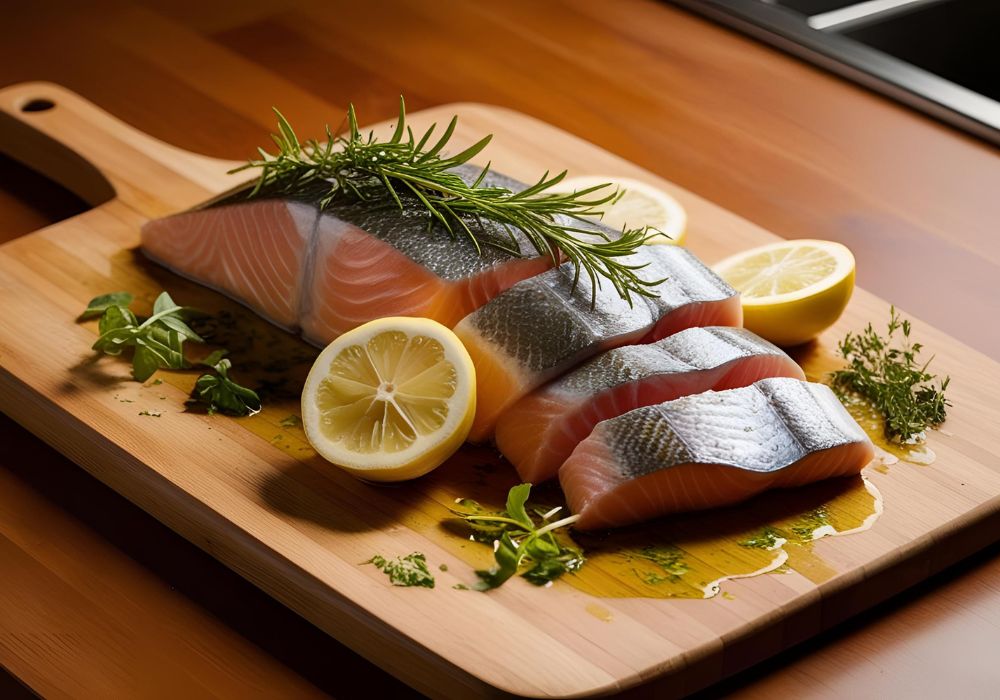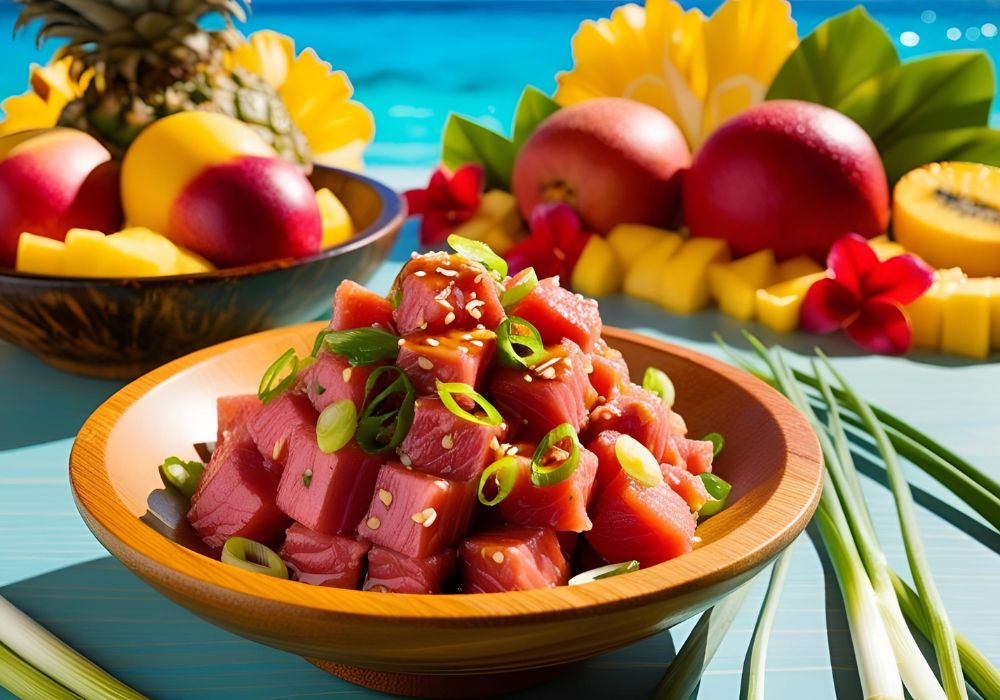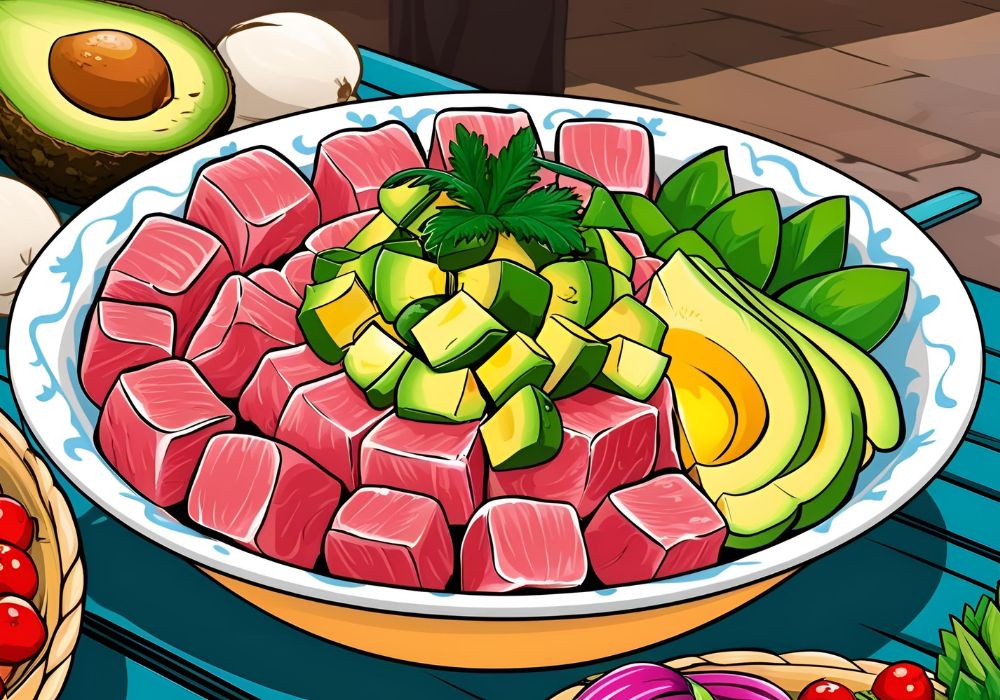Ahi is a term you may have seen on restaurant menus or heard in culinary discussions, often linked to dishes that exude freshness, flavour, and a touch of the exotic. Whether it’s the star of a poke bowl or a pan-seared highlight on a plate, Ahi is celebrated in seafood cuisines across the globe. But what exactly is Ahi, and why do seafood lovers and culinary adventurers so revere it?
This post dives into the world of Ahi, breaking down what it is, where it comes from, its unique taste profile, and how you can incorporate it into your kitchen creations.
What Is Ahi?
Ahi refers to two species of tuna commonly found in tropical and subtropical waters of the world’s oceans. These species are:

Yellowfin Tuna (Thunnus albacares): Named after its distinctively bright yellow fins, this tuna species is notable for its mild and firm texture. It is the most widely used Ahi in both raw and cooked seafood dishes.
Bigeye Tuna (Thunnus obesus): Known for its slightly richer flavour and higher fat content, bigeye tuna is prized for its buttery texture, making it a favourite for sushi and sashimi aficionados.
The word “ahi” originates from Hawaiian, which refers to both of these tuna species. Traditionally, fishermen would use handlines to catch Ahi, and it’s been a staple in Hawaiian cuisine for centuries.
Why Is Ahi Special?
Ahi stands out among other types of fish because of its versatility, high-quality, and exceptional flavour profile. It has firm, tender flesh that ranges in colour from pale pink to deep red. The taste is mild enough to please a wide audience yet rich enough to stand up to bold flavours like soy sauce, sesame oil, wasabi, and citrus marinades.
It’s also known for being a fantastic source of lean protein, rich in omega-3 fatty acids, vitamins like B12 and D, and minerals including selenium and potassium. Not only does Ahi taste great, but it also offers numerous health benefits.
Ahi in Cuisine
Ahi plays a prominent role in many culinary traditions, especially in Pacific Rim cuisines like Hawaiian, Japanese, and Southeast Asian cooking. Below, we’ll explore some of its most popular uses:

- Ahi Poke
A quintessential Hawaiian dish, ahi poke (pronounced poh-kay) is a salad made with cubes of raw ahi tuna, soy sauce, sesame oil, onions, and various spices. It’s light, refreshing, and packed with umami. Available in endless flavour variations, ahi poke has become a global sensation, often served over rice in bowls. - Sushi and Sashimi
Ahi is a rock star in Japanese cuisine, especially in sashimi and sushi. Bigeye tuna, in particular, is cherished for its melt-in-your-mouth quality when served raw. Nigiri sushi, topped with a slice of fresh Ahi, is simple yet indulgent, showcasing the fish’s pure flavours. - Seared Ahi
For those who enjoy a more cooked preparation, seared Ahi is a perfect choice. Typically crusted in sesame seeds or spices, the tuna is briefly seared on the outside while remaining rare in the centre. It’s often served with dipping sauces like ponzu or wasabi aioli. - Grilled Ahi Steaks
With its sturdy texture, Ahi holds up beautifully on the grill. Keep it simple with olive oil, salt, and pepper, or marinate it in a blend of soy, ginger, and honey for a sweet-savoury flavour profile. Cook it medium-rare to preserve its tenderness. - Ceviche
Ahi also stars in ceviche, a Latin American dish where the fish is “cooked” in citrus juice. The brightness of lime or lemon juice complements the tuna’s natural richness, creating a dish that’s both refreshing and bold. - Tuna Tartare
For a refined, upscale experience, ahi tuna tartare is a popular choice in high-end restaurants. Finely chopped raw tuna is flavoured with ingredients like sesame oil, avocado, jalapeño, or citrus zest to elevate the taste.
How to Source High-Quality Ahi
Choosing high-quality Ahi is crucial for achieving the best results for your dishes, especially if you plan to consume it raw. Here are a few tips to ensure you’re getting the best product:
Go for Sushi-Grade Tuna: Look for labels identifying it as “sushi-grade” or “sashimi-grade,” which indicates it’s safe to eat raw.
Check Freshness: Fresh Ahi should be firm to the touch and have a clean, ocean-like smell. If it smells overly fishy, it may not be fresh.
Seek Sustainable Sources: Overfishing is a concern for tuna populations. Look for seafood certified by organizations like the Marine Stewardship Council (MSC) to ensure you’re purchasing responsibly caught Ahi.
Cooking Tips for Ahi
Cooking with Ahi is a joy, and its forgiving nature makes it beginner-friendly. Follow these tips for the best results:
Keep It Rare: Ahi tuna is best enjoyed rare to medium-rare to retain its tender texture. Overcooking can make it dry and firm.
Cut Properly: Use a sharp knife to cut the Ahi against the grain for the cleanest cuts, especially when making sushi or poke.
Pair with Bold Flavors: Ahi’s mild flavour is a blank canvas for marinades, spices, and dipping sauces. Experiment with soy sauce, ginger, lime, and chilli for exciting flavour combinations.
Serve Immediately: Whether raw or cooked, Ahi is best served fresh for optimal taste and texture.
The Nutritional Benefits of Ahi
Beyond its culinary appeal, ahi tuna is packed with nutrients that make it a healthy addition to your diet:
Protein Powerhouse: Ahi is an excellent source of lean protein, making it ideal for post-workout meals or maintaining muscle health.
Rich in Omega-3s: These essential fatty acids support heart health, reduce inflammation, and improve brain function.
Low in Calories: Ahi is a low-calorie option that’s packed with flavour, making it perfect for those watching their weight.
Final Thoughts
Ahi is more than just a delicious seafood choice; it’s a versatile ingredient with a rich cultural and culinary heritage. From poke bowls to sushi plates, grilled steaks to tartare, Ahi offers endless possibilities for food enthusiasts and culinary adventurers. Whether you’re savouring it raw or cooked, its exceptional taste and health benefits make it a star ingredient worth exploring.
The next time you’re at your local seafood market or dining out, don’t hesitate to give Ahi a try. Its flavour, texture, and versatility are sure to impress. Happy cooking (and eating)!



















